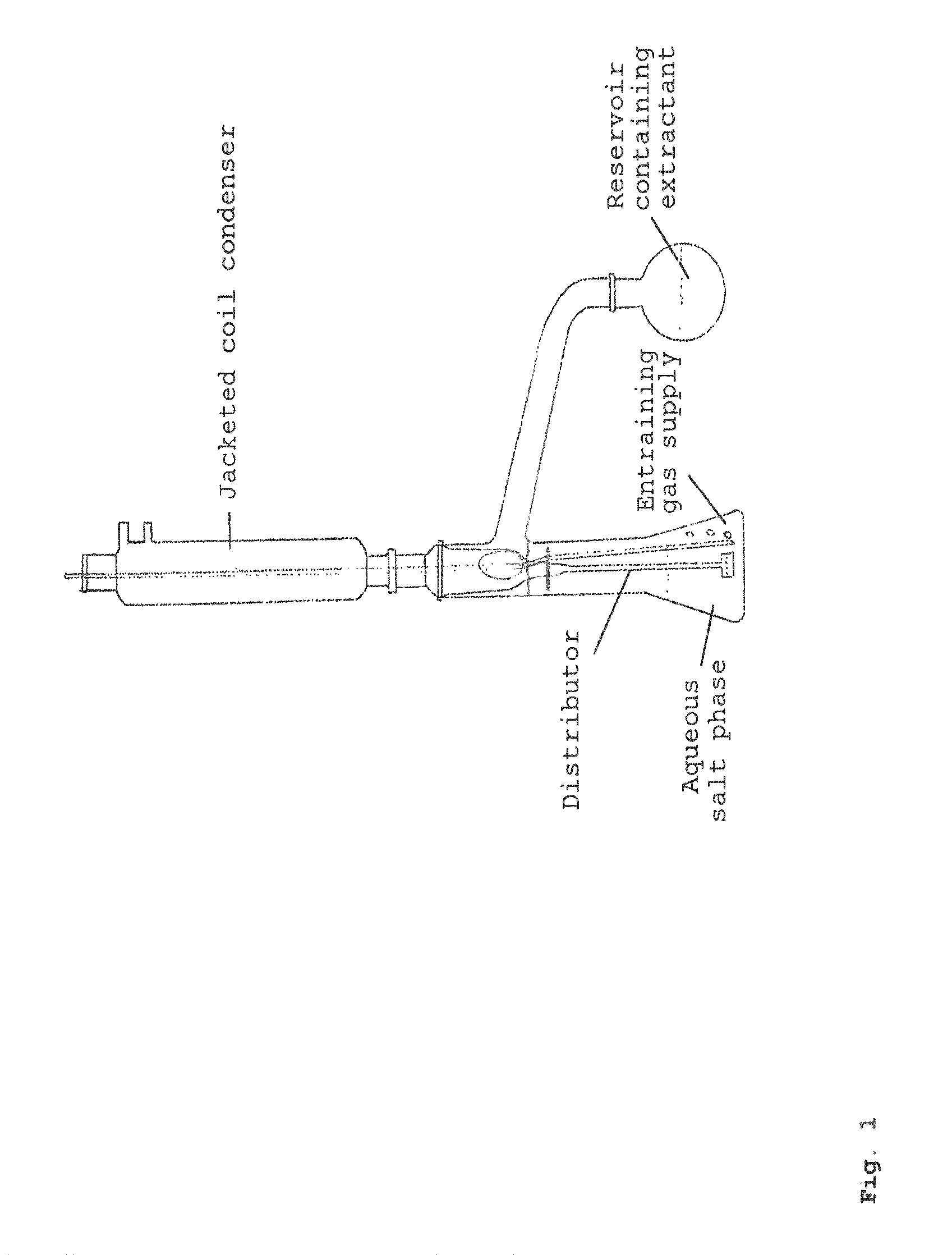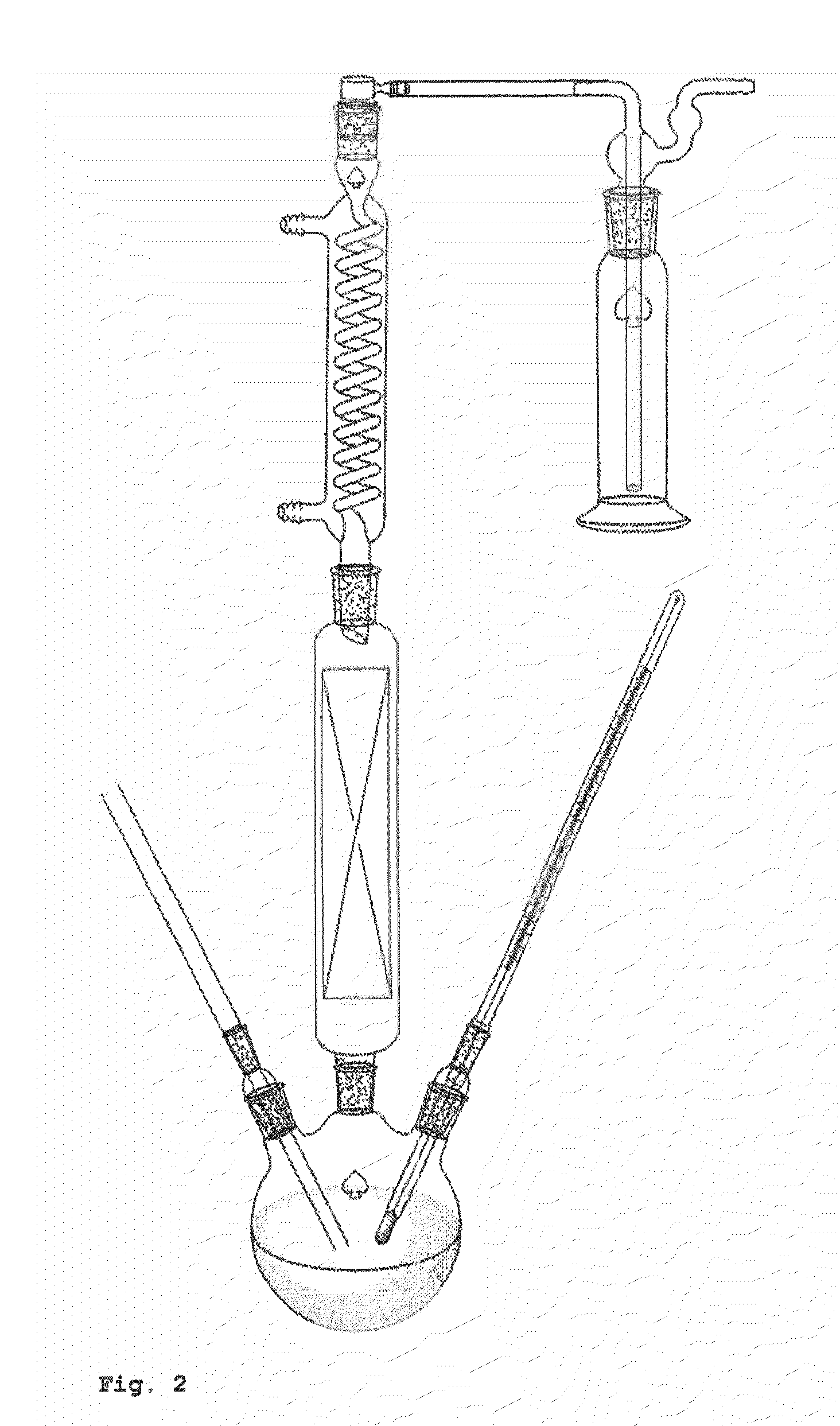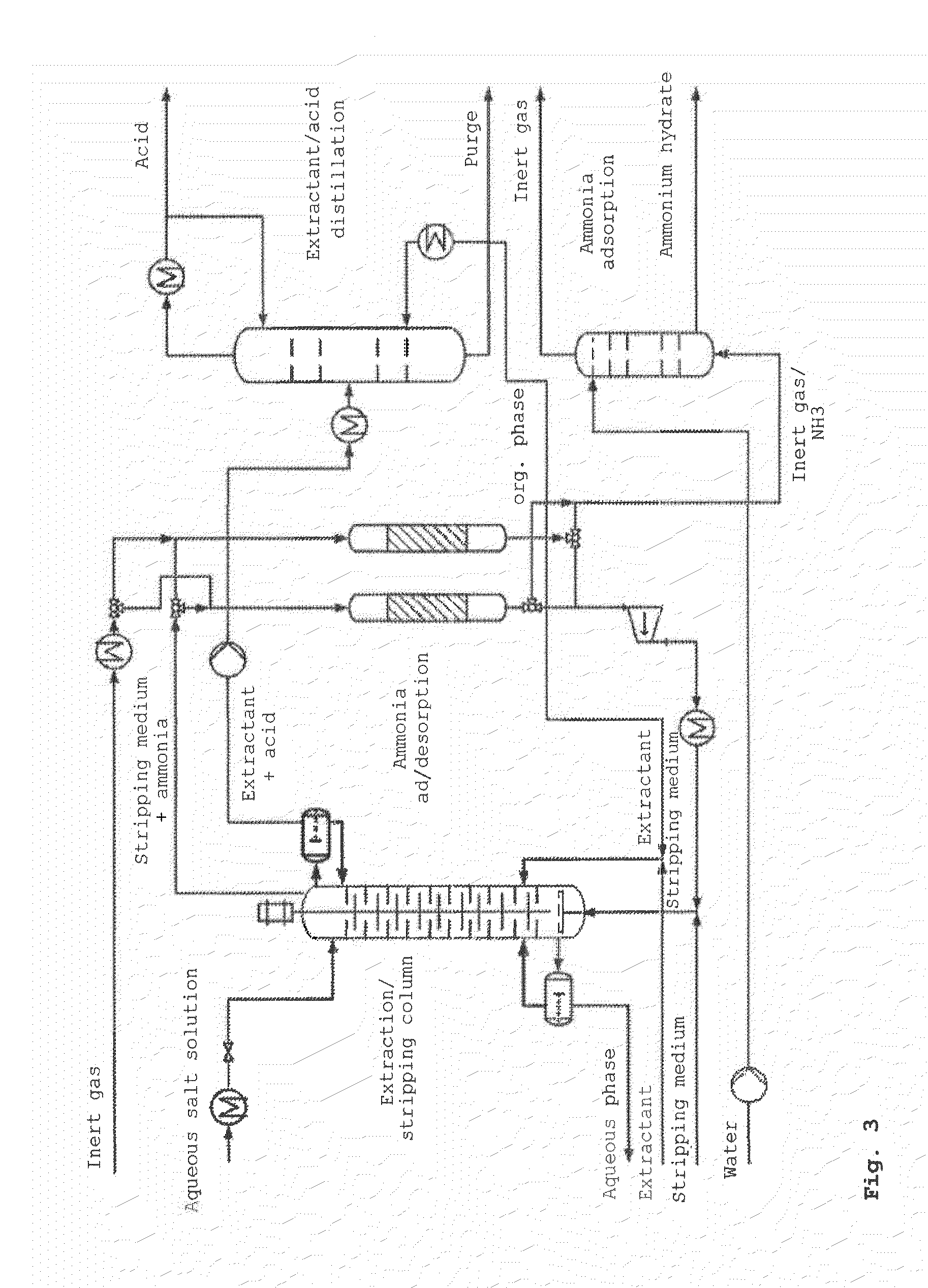Method for producing a free acid from the salt thereof
a technology of free acid and salt, which is applied in the direction of organic chemistry, chemistry apparatus and processes, and group 5/15 element organic compounds, can solve the problems of large amounts of salt even having to be disposed of with disposal costs, and processes in which no salt burden occurs are currently uneconomic for industrial scale, and achieve rapid reactive extraction. the effect of advancing, not hindering the release of further ammonia, and influencing the viscosity of the amine used
- Summary
- Abstract
- Description
- Claims
- Application Information
AI Technical Summary
Benefits of technology
Problems solved by technology
Method used
Image
Examples
example 1
Reactive Extraction of 2-Hydroxyisobutyric Acid from a 10% by Weight Ammonium 2-Hydroxyisobutyrate Solution with Diisotridecylamine
[0123]The example described hereinafter was performed in the apparatus shown in FIG. 2.
[0124]A three-neck flask was initially charged with 85.07 g of a 10% by weight ammonium 2-hydroxyisobutyrate solution and 85.04 g of diisotridecylamine. The two phases were mixed vigorously with a magnetic stirrer. The 3-neck flask was heated to 95° C. at ambient pressure in an oil bath. A glass frit for nitrogen stripping was inserted into one of the lateral orifices of the flask, and a gas flow of 20 l / h was established. A thermometer to measure the internal temperature was inserted into the second lateral orifice. A column with random packing (approx. 0.7 m) was inserted into the remaining orifice of the 3-neck flask. At the upper end of the column was mounted a jacketed coil condenser. Connected thereto was a wash bottle filled with 107.66 g of dilute sulphuric aci...
example 2
Reactive Extraction of 2-Hydroxyisobutyric Acid from a 10% by Weight Ammonium 2-Hydroxyisobutyrate Solution with Trihexylamine
[0125]The example described below was performed in the apparatus shown in FIG. 2.
[0126]A three-neck flask was initially charged with 99.53 g of a 10% by weight ammonium 2-hydroxyisobutyrate solution and 55.07 g of trihexylamine. The two phases were mixed vigorously with a magnetic stirrer. The 3-neck flask was heated to 95° C. at ambient pressure in an oil bath. A glass frit for nitrogen stripping with a gas flow of approx. 20 l / h and a thermometer to measure the internal temperature were inserted into the lateral orifices of the flask. A column with random packing (approx. 0.7 m) was inserted into the remaining orifice of the 3-neck flask. At the upper end of the column was mounted a jacketed coil condenser. Connected thereto was a wash bottle filled with 99.79 g of dilute sulphuric acid (1 mol / l), in which the ammonia which had been stripped out was absorbe...
example 3
Reactive Extraction of 2-Hydroxyisobutyric Acid from a 10% by Weight Ammonium 2-Hydroxyisobutyrate Solution with Trioctylamine (TOA)
[0127]The example described below was carried out in the apparatus described in FIG. 2.
[0128]A three-neck flask was initially charged with 200.53 g of a 10% by weight ammonium 2-hydroxyisobutyrate solution and 200.12 g of TOA. The two phases were mixed vigorously with a magnetic stirrer. The 3-neck flask was heated to 95° C. at ambient pressure in an oil bath. A glass frit for nitrogen stripping with a gas flow of 20 l / h and a thermometer to measure the internal temperature were inserted into the lateral orifices of the flask. A column with random packing (approx. 0.7 m) was inserted into the remaining orifice of the 3-neck flask. At the upper end of the column was mounted a jacketed coil condenser. Connected to this was a wash bottle filled with 60.04 g of dilute sulphuric acid (1 mol / l), in which the ammonia which had been stripped out was absorbed fo...
PUM
| Property | Measurement | Unit |
|---|---|---|
| pressure | aaaaa | aaaaa |
| temperature | aaaaa | aaaaa |
| pKa | aaaaa | aaaaa |
Abstract
Description
Claims
Application Information
 Login to View More
Login to View More - R&D
- Intellectual Property
- Life Sciences
- Materials
- Tech Scout
- Unparalleled Data Quality
- Higher Quality Content
- 60% Fewer Hallucinations
Browse by: Latest US Patents, China's latest patents, Technical Efficacy Thesaurus, Application Domain, Technology Topic, Popular Technical Reports.
© 2025 PatSnap. All rights reserved.Legal|Privacy policy|Modern Slavery Act Transparency Statement|Sitemap|About US| Contact US: help@patsnap.com



